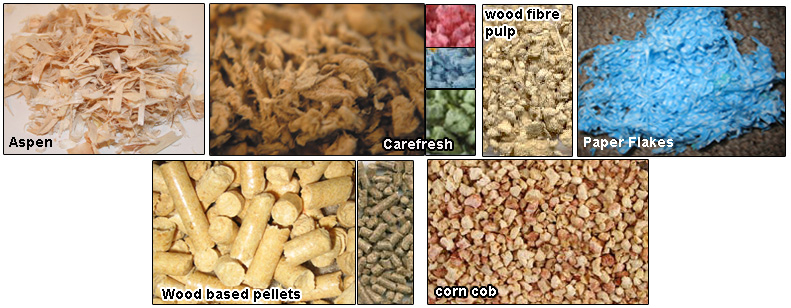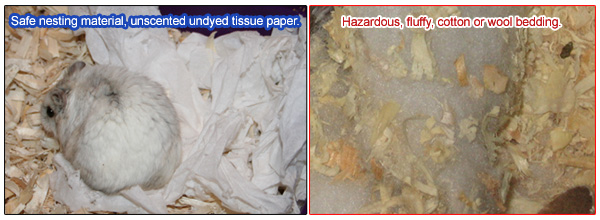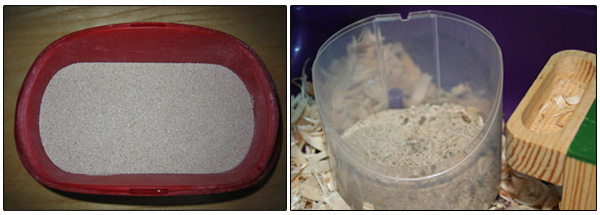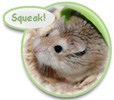Hamster Bedding, Substrate and Nesting materials.
From Hamster Central WIKI
All hamsters need to be housed with a type of bedding (or substrate). These days there is a wide variety of substrates available to small animals, it can be possibly overwhelming to choose! Some are good for hamsters and some are bad. In this article you will read an overview on what is recommended and what is not.
Bedding or substrate, is the material in which you cover your hamsters cage with. It is the primary material that your fury friend will be living on its whole life. Hamsters are burrowing creatures and enjoy digging around. The bedding offers a natural cozy floor. It is also used to build its nest with to keep warm and act as a sponge, absorbing urine. Sadly many pet stores still sell substrates which can be harmful to your hamster. Be aware of what pet store try and sell you. More often then not employees are not adequately trained or aware. Remember, just because its for sale in a pet store doesn't always mean its a safe choice. Thankfully you are reading this so you will be prepared!
Two types to avoid using are clumping cat litter and cedar based shavings and litters. Hamsters are coprophagic which means they eat a portion of their feces as part of the digestive process. Kitty litter will get lodge in the digestive system and will cause the hamster to die of an intestinal obstruction if digested.
Pine and Cedar shaving release aromatic oils which over long periods of time of breathing these fumes, a hamster can become ill from irritation of the respiratory system, and in some cases cause neurological damage.
For those in the UK please note that pine wood shavings do not have this problem. Cedar is one of the problematic substrates which is still offered in pet stores.
Many people are now switching to and recommending bedding made of reclaimed cellulose fiber that does not contain ink, solvent or dyes found in many recycled paper products. Its soft and extremely absorbent, has no scent and is hypoallergenic. The original color appears to look like small chucks of gray dried paper pulp. Some brands out there are Carefresh (found in many colors now!) and Yesterday's News and CritterCare to name a few.

While you can use wood based pellets and corncob type beddings they don't really appear that comfortable. My opinion as the author of this article is that a hamster would probably feel more comfortable living on a softer substrate.
Bedding/nesting material
Hamsters will appreciate bedding material to build a nest with. However any bedding material that it fluffy, cotton or wool should be avoided. These materials can cause harm if eaten by the hamster and the fine fibers can become caught around the hamster's limb causing injury.
Soft paper bedding is best. Try taking un-dyed and unscented toilet paper or paper towel and tearing it into strips for your hamster. Hay can also be used but it should be clean and not moldy or dusty. Straw should not be used as the sharp edges can injure a hamster.

Sand baths. You can buy chinchilla sand at your local pet store and place it in a shallow dish or empty glass jar on its side large enough for the hamster to safely enter and turn around in, or simply a cut out box. There are also special sand bathhouses you can guy for small rodents if you wish. They will love rolling and digging in it. The sand will help wear their nails down and keep the coast clean and helps to take some of the grease out of their fur. Make sure you stay away from any products labeled �Powder� or "Dust". These products may cause respiratory problems in your hamster. Dwarf hamsters would appreciate this a great deal seeing as they tend to have the most grease in their fur. But a Syrian hamster would equally like it. You can also train them to use this as a potty for easy cleaning.



